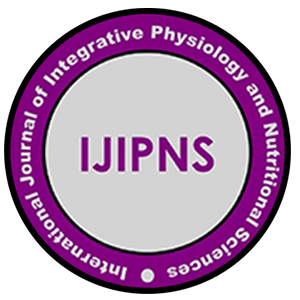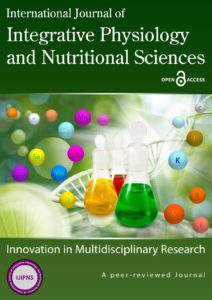Introduction
Pain control and pros and cons of pain killers is a significant clinical issue. Tramadol is known to be a drug that helps with pain-relieving with questionable properties. But unfortunately, there is not enough data on the overall logical yield of Tramadol. Along these lines, the principal goal of this investigation is to give a bibliometric outline of worldwide research efficiency on Tramadol (Sweileh et al., 2016) Patients dealing with interminable non-threatening pain often face disability of some sort. Mostly which is physical alongside mental state influencing their general personal satisfaction. The reason for overseeing torment is to lessen the injury and improve understanding solace with a superior personal satisfaction (Subedi et al., 2019).
Discussion
Pain can be categorized into the following main types:
- Nociceptive pain (caused due to tissue injury)
- Neuropathic pain (because of nerve injury)
- Neuroplastic pain (caused by musculoskeletal disease for example inflammatory pain).
For its treatment, pharmacology researchers suggested different medications and methodologies, for example, NSAID classification drugs, antidepressants, anti-cytokines, paracetamol and narcotics. Tramadol is also prescribed to cure any sort of agony or discomfort. Since it has a strong pain-relieving movement (Subedi et al., 2019).
(+/ – )- Tramadol can be classified as a manufactured 4-phenyl-piperidine simple of codeine. Which is in fact a prime pain-relieving having a low fondness for narcotic (opioid) receptors. Its selectivity for mu receptors has as of late been illustrated. Its M1 metabolite shows a higher proclivity for narcotic receptors than the parent medicate which is created by liver O-demethylation. A polymorphic isoenzyme of the debrisoquine-type, cytochrome P450 2D6 (CYP2D6) actually controls the pace of creation for this M1 subsidiary (O-demethyl tramadol). By and by, the liking for mu receptors of the CNS stays lower, which is almost 6000 times lesser than that of morphine. Besides, rather than different narcotics, the pain-relieving activity of tramadol is just halfway restrained by the narcotic opponent naloxone, it proposes that there is some other system of activity present as well. The disclosure of a monoaminergic movement actually showed it and it restrains noradrenaline (norepinephrine) and serotonin (5-hydroxytryptamine; 5-HT) reuptake, by developing a noteworthy commitment with pain-relieving activity by hindering nociceptive driving forces at the spinal level (Dayer et al. 1997). This drug adheres to the “Lipinski rule of five” which are: “atomic weight-263.19, hydrogen bond contributor 1, hydrogen bond acceptor-2, molar refractivity-1.55, and partition coefficient-2.88” (Subedi et al., 2019).
Natural Source of Tramadol
The biosynthetic forerunners of tramadol are L-lysine, l-arginine, l-tyrosine, l-phenylalanine, and l-tryptophan amino acids. The creators, with the help of the 13C position-explicit isotope examination, also proposed a biosynthetic pathway. It begins from amino acid l-phenylalanine and l-lysine. The transitional (7-(dimethyl amino)-3-hydroxy-1-(3-methoxyphenyl) heptan-1-one) is formed by aldolization of 3′-methoxyacetophenone with N, N-dimethyl-5-aminopentanal. At that point, transition is diminished into aminoketone and then eventually it is additionally oxidized to iminium. At last, cyclization of iminium gets tramadol which then followed by a decrease (Subedi et al., 2019).
Chemical Synthesis of Tramadol
The chemical synthesis of tramadol in laboratory is simple and practical. A beginning material is Cyclohexanone, by the help of cyclohexanone with dimethylamine hydrochloride and n-methyl-1-phenylmethanamide compound 2 and 3 are achieved. Once that happens, the mixes 2 and 3 respond to (3-methoxyphenyl) lithium within a sight of ethyl ether and hydrochloric acid to deliver Tramadol (Subedi et al., 2019).
Tramadol tests segregated by the pills purchased at a road advertise in downtown Maroua. The high‐precision 14C estimations were used to examine the exceptionally debased soil at Houdouvou by quickening agent mass spectrometry (14C AMS): It was noted that tramadol pills didn’t contain radiocarbon, thus it shows that tramadol is one of the 14C‐free petroleum‐derived antecedents. Essentially, when it is secluded from the dirt was likewise radiocarbon‐free. Since all biosynthetic plant mixes should have radiocarbon levels near to the existing condition, these outcomes in this manner affirm that tramadol detached from the dirt can’t be plant‐derived (Kusari et al., 2016).
Mechanism of Action
Tramadol has an excellent pain-relieving action by its activity on the focal sensory system. Actually, a racemic blend of (+) dextro and (-) levo enantiomer in tramadol shows a synergistic pain relieving impact. The mechanism of action has various pathways, for example, a serotonin and norepinephrine reuptake inhibitors for the nociception agonist or as the powerless MOR. O-desmethyl tramadol metabolite (M1) in tramadol additionally indicates pain-relieving activity through going about like a powerless MOR agonist. The (+) enantiomer also goes about like a MOR agonist and through restraint of the reuptake of serotonin, though (-) enantiomer hinders reuptake of norepinephrine (Subedi et al., 2019).
Dosage and Intake
Tramadol is suggested for the administration of intense or interminable moderate to serious pain. In grown-ups and young people, the typical dose is 50 to 100mg each 4 to 6 hours as required, with the greatest measurement of 400 mg/day. It might be controlled orally or parenterally, albeit just an oral detailing is accessible in the US. Measurements modifications might be required in patients with renal or hepatic hindrance and in those >75 years old. Proposals for the utilization of tramadol in pediatric patients may differ between singular nations. For instance, tramadol isn’t suggested for use in kids <12 years old in the UK or in those <16 years old in the US, though in Germany a few plans are endorsed for use in youngsters matured ≥1 year (Scott & Perry, 2000)
Research Productivity on Tramadol
In order to recover and quantify the research also subjectively dissect overall distributions on tramadol around the globe, SciVerse Scopus was chosen. An aggregate of 2059 unique and audit explore publications were recovered from Scopus written on tramadol. Anesthesia and Analgesia Journal had 46 reports (2.23 %) while Arzneimittel Forschung Drug Research Journal had 30 (1.46 %) reports written on them. Recovered records on tramadol documented from 71 nations were collected which made up to 160 professionally revised publications. Despite the fact that the biggest commitment to research reports on tramadol was shown in USA (259; 12.86 %); while different nations like Turkey showed (232; 11.27%), India had (189; 8.09 %) similarly Germany had (176; 8.56 %) which is not very far away from that of USA. The most gainful establishment was done by Grunenthal, Germany which is (47; 2.28 %) trailed by Tehran University of Medical Sciences, also Iran has (29; 1.41 %), likewise Ortho-McNeil Pharmaceutical Incorporated, USA has (25; 1.21 %). 370 archives were found about reliance out of the 2059 records. The main establishment for archives relating tramadol reliance was by Grunenthal GmbH (18; 4.86 %) and then Ortho-McNeil Pharmaceutical Incorporated (17; 4.59 %) (Sweileh et al., 2016).
Conclusion
We can see an undeniable enthusiasm for tramadol explore when it comes to research. However, a lot more work is expected so it can explain the tramadol side effects and security profile in order to help with deciding tramadol status as an analgesic and the impact of tramadol-related natural compounds on pain.


